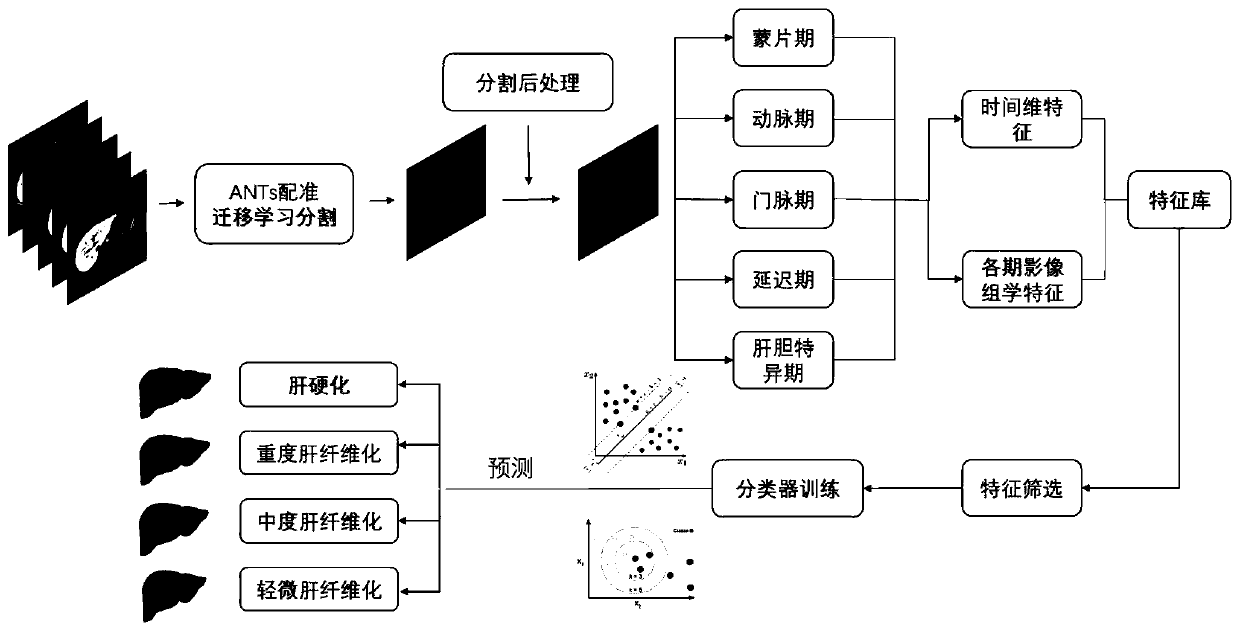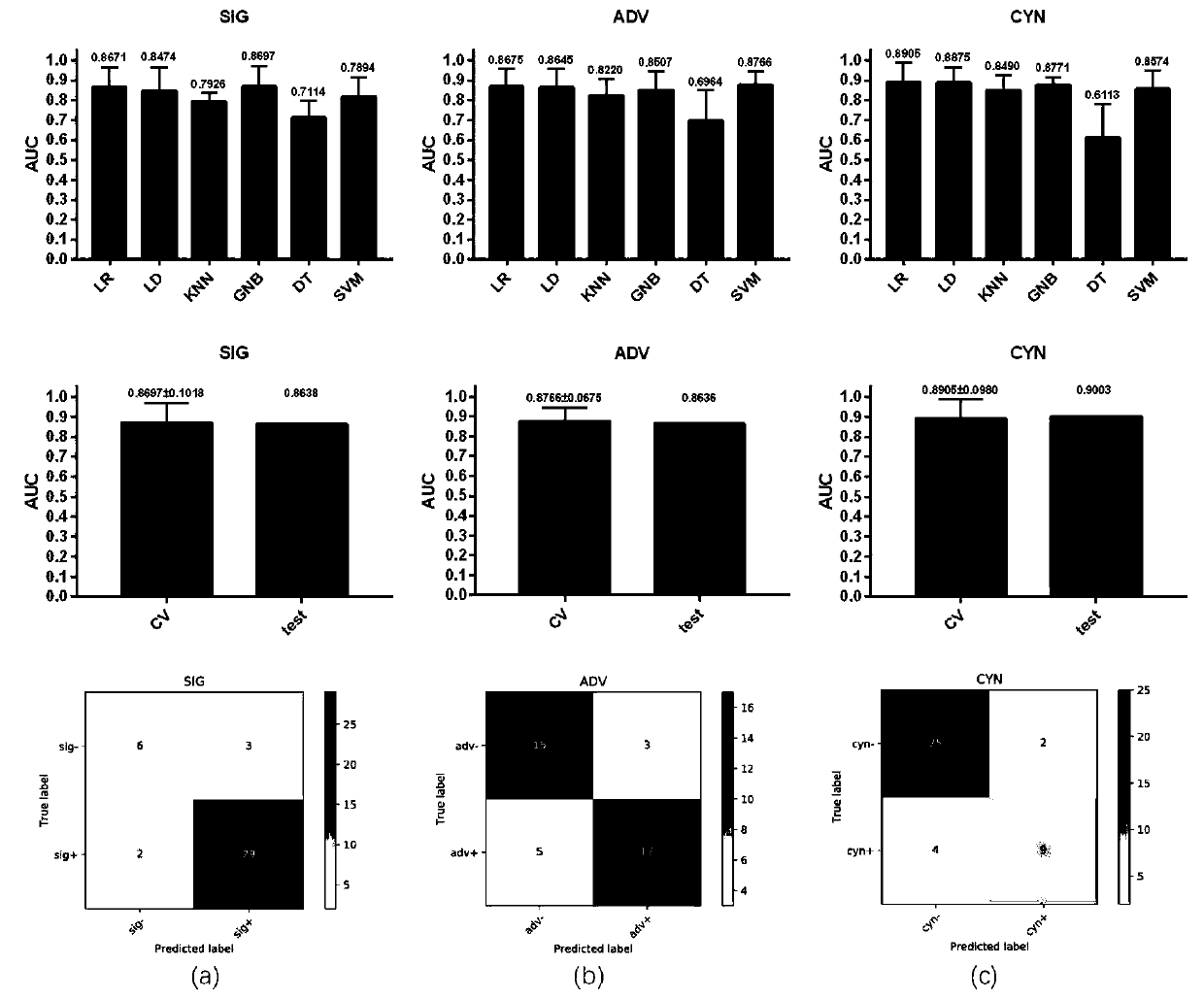MRI image liver fibrosis automatic grading method based on imaging omics analysis
A technology of liver fibrosis and radiomics, which is applied in the field of automatic grading of liver fibrosis in MRI images, can solve the problem that it is difficult to find radiomics features of liver fibrosis, reduce the need for manual labeling, save time and energy, and realize fully automated effect
- Summary
- Abstract
- Description
- Claims
- Application Information
AI Technical Summary
Problems solved by technology
Method used
Image
Examples
Embodiment Construction
[0040] The present invention proposes an automatic segmentation based on transfer learning, and uses radiomics analysis to perform automatic grading of liver fibrosis on Gd-EOB-DTPA contrast agent magnetic resonance dynamic enhancement images. Further details are as follows in conjunction with the accompanying drawings and embodiments.
[0041] (1) Liver fibrosis grading task and initial data set:
[0042] (1-1) According to the Scheuer-Ludwig (S) scoring rules, S1 is defined as mild liver fibrosis, S2-4 is defined as moderate liver fibrosis, S3-4 is defined as severe liver fibrosis, and S4 is defined as liver cirrhosis ;Limited by the number of cases, the four-category task was transformed into three two-category tasks, namely the classification of moderate liver fibrosis (S2-4 vs S1), the classification of severe liver fibrosis (S3-4 vs S1-2), and the classification of liver cirrhosis (S4 vs S1-3) tasks;
[0043] (1-2) The initial data set is 132 cases of hepatitis B patien...
PUM
 Login to View More
Login to View More Abstract
Description
Claims
Application Information
 Login to View More
Login to View More - R&D
- Intellectual Property
- Life Sciences
- Materials
- Tech Scout
- Unparalleled Data Quality
- Higher Quality Content
- 60% Fewer Hallucinations
Browse by: Latest US Patents, China's latest patents, Technical Efficacy Thesaurus, Application Domain, Technology Topic, Popular Technical Reports.
© 2025 PatSnap. All rights reserved.Legal|Privacy policy|Modern Slavery Act Transparency Statement|Sitemap|About US| Contact US: help@patsnap.com



